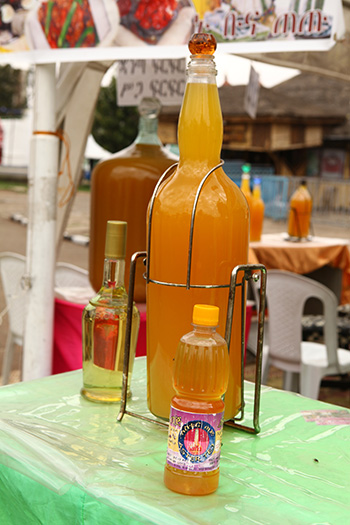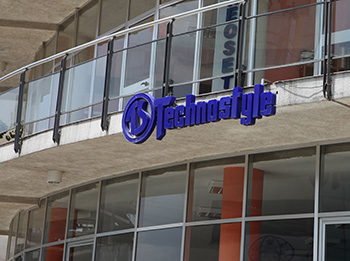Ethiopian Industry: Will Ethiopia achieve the industry GTP targets on time?
Ethiopia Sector Analysis
Ethiopian Industry: Will Ethiopia achieve the industry GTP targets on time?
To increase the domestic supply the government has been trying to address the problems by encouraging and supporting investors involved in the following industries: textile, leather, sugar, cement, metal, chemical, pharmaceutical and agro-processing industries.

Ethiopian Industry: Will Ethiopia achieve the industry GTP targets on time?
By Bewket Abebe
ADDIS ABABA – The industry in Ethiopia has a long history. Since 1880’s—during the time of emperor Tewodrose, who had tried to introduce manufacturing mainly to produce guns with the help of British nationals—different attempts under different administrations have been made to increase the role of the industry sector in the overall economy of the country. The military socialist regime under Dergue (1974-1991) also set different policies that could raise the role of industries. The current administration on its part has given much attention to the sector in its five year Growth and Transformation Plan (GTP 2010-2015). Nonetheless, the sector is still struggling to take over the lion’s share in the country’s agriculture-led economy.

The industry sector of Ethiopia mostly consists of small to medium scale industries which rely on agriculture productivity and whose majority of the consumer goods are imported from Europe, China and the US. “There are no particular factories here for producing construction material. The supply is limited and some of the finishing materials are coming from elsewhere,” claims Gebreyesus Igata, owner and general manager of GIFT Real Estate, one of the key real estate developers in Addis Ababa.
The government has been trying to address the problems by encouraging and supporting investors involved in the sector, especially those involved in the following industries: textiles and garments, leather and leather products, sugar and sugar related industries, cement, metal and engineering, chemical, pharmaceutical and agro-processing industries.
There have been huge public investments in certain areas. Over ten public sugar projects are currently under development. Led by the state-owned metal and engineering corporation (it is administered by the defense), the metal and engineering sector is also seeing meaningful achievements. Assemblies are highly undertaken in different metal works. The leather and textile sectors, which are dominated by private investors (mainly foreign), have witnessed positive developments.
Will Ethiopia achieve the goals set out in the Growth & Transformation Plan?
The GTP states that the economic growth is expected to be intense, with industry recording 20% annual growth rates. The goals is to double the contribution of industries to the GDP of Ethiopia (from 10% to 21.4%). From the baseline (2009/10) to the target (2014/15), industry value added products are expected to achieve an annual growth rate of 19% (from 13% in 2009/10) while the cement production is supposed to increase ten-fold from 2.7 million tons up to 27 million tons. Sugar production on its part is expected to grow from 17.7 million tons to 42.5 million tons while the textiles and garment segment (mainly for export) is also supposed to raise the revenue from 21.8 million birr to 100 million birr. In addition, the metal consumption is also expected to advance from 12kg per capita to 34kg per capita.
The GTP states that the economic growth is expected to be intense, with industry recording 20% annual growth rates. The goals is to double the contribution of industries to the GDP of Ethiopia (from 10% to 21.4%).
Is the actual performance of Ethiopian industries keeping up with the goals detailed above?
During the 2012/13 fiscal year, only 281 million USD was secured from the sector, which is far from the target of 542 million USD. There is growth from year to year but not to the planned level. In the 2012/13 fiscal year, the leather and leather products sub-sector earned 123.4 million USD against the planned 192 million USD—a 64% achievement. Similarly, the current cement production does not correspond with the country’s demand for cement. “Ethiopia has been growing by two digits.
Even though it is 1.2 times the GDP, the cement demand grew by 35%. Therefore we invested in the cement plant,” comments Haile Assegide, executive director of Derba Cement, the major cement supplier in Ethiopia and a sister company of the largest private investor in the country.
Overcoming the obstacles
Ethiopian industry has been falling behind the GTP goals for the last three consecutive years despite the fact that there has been some good growth recorded. The government is making sure to resolve the problems appearing along the way, which hinder the expected growth. The failure is mostly attributed to frequent power cut, a shortage of finance and an inadequate supply of raw materials. “We are seeing some changes in the policies throughout the private sector,” confirms Assegide.

Amelework Ghidey, the managing director of Technostyle, a leading importer and supplier of furniture in Ethiopia, shares Assegide’s view.
“The government’s five year growth and development plan has identified that manufacturing is a core solution to the growth of the Ethiopian economy. That’s where we come in,” she says.
The import of materials from abroad, particularly from China, has on the other hand become another obstacle for the local industries. “Sometimes equipment is coming from Asia and this equipment is very cheap in price. This is one of the challenges because most of the time the client requires a low price,” claims Eng. Samson Bekure Tefera, managing director of SABA Engineering. “Sometimes we have to cut down and balance both the quality and the price,” he adds.The government has recently started providing companies in the sector with separate power lines, which are thought to increase the productivity of companies in the industry sector to a minimum of 80% of their capacity. In the current scenario, the companies face such frequent power cut that they use a maximum of 60% of their capacity. Given that the spare parts are mostly imported, the government has also allowed tax free import of spare parts to support the sector.
The question remains whether the government will succeed in making the industry sector the leading sector of Ethiopia’s economy within the remaining time—a year and half?
The latest report by the government revealed that the last three years performed at only 54% of the target. The officials are nonetheless maintaining that the GTP goals will be achieved ‘by hook or by crook’.
FAIR USE POLICY
This material (including media content) may not be published, broadcasted, rewritten, or redistributed. However, linking directly to the page (including the source, i.e. Marcopolis.net) is permitted and encouraged.